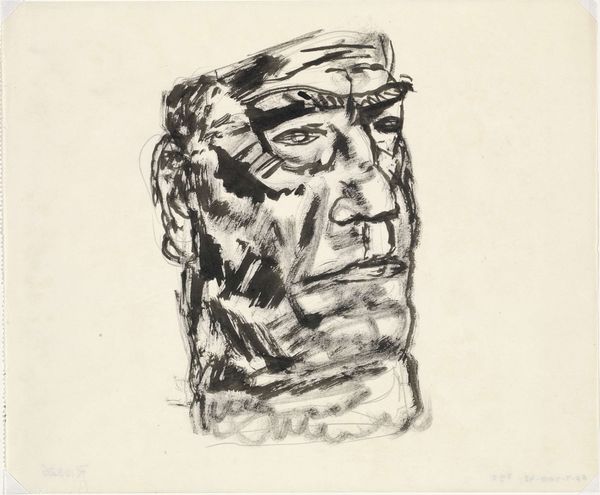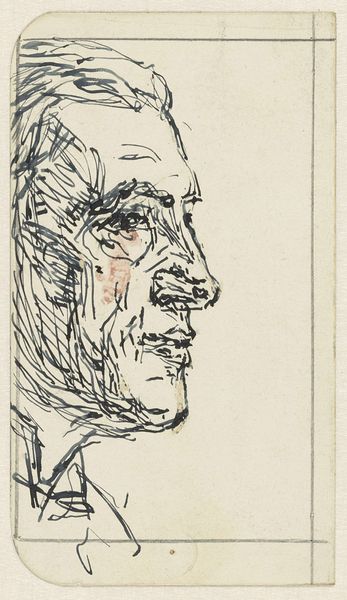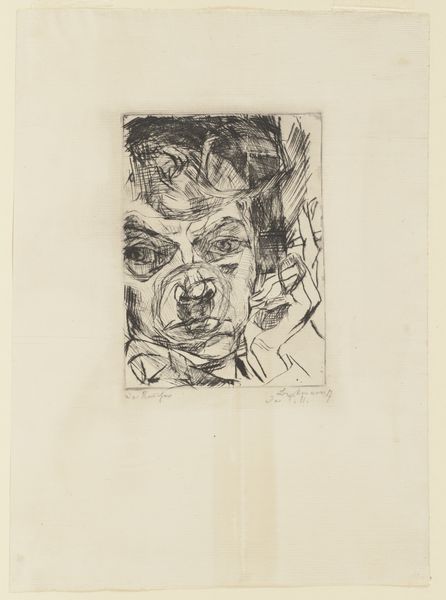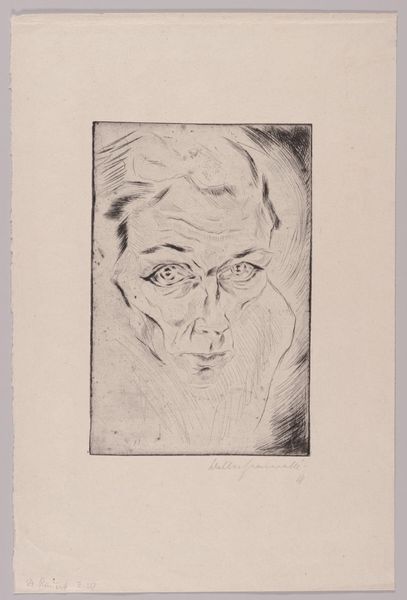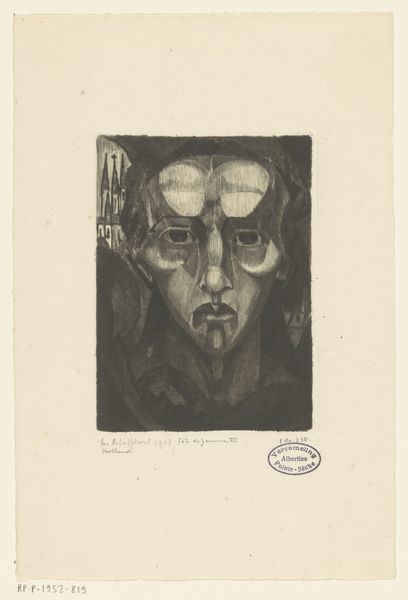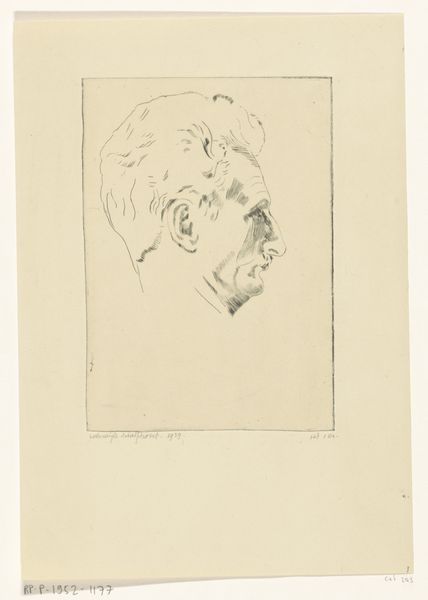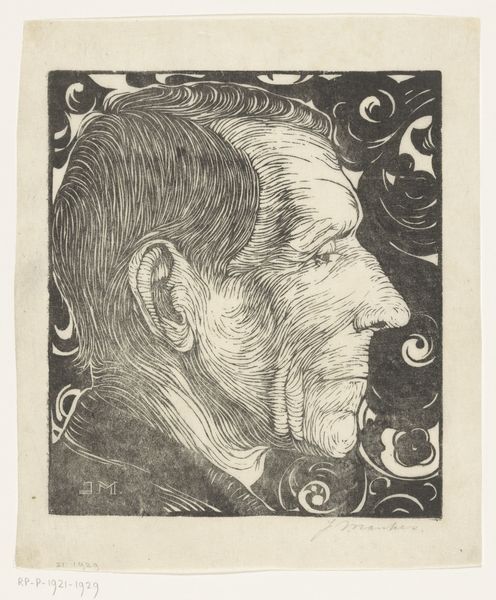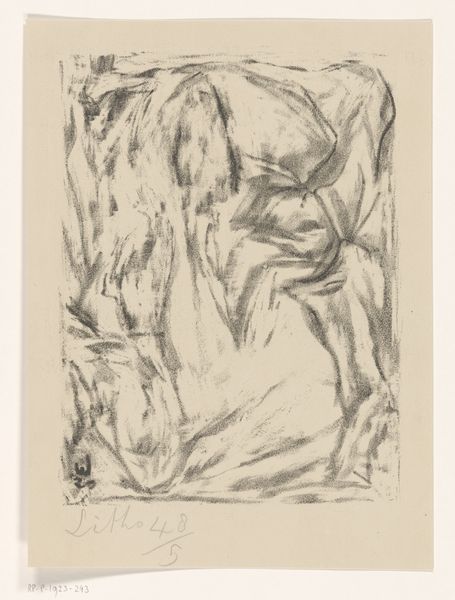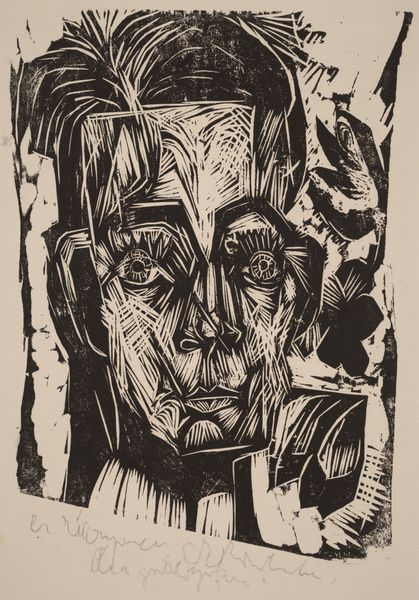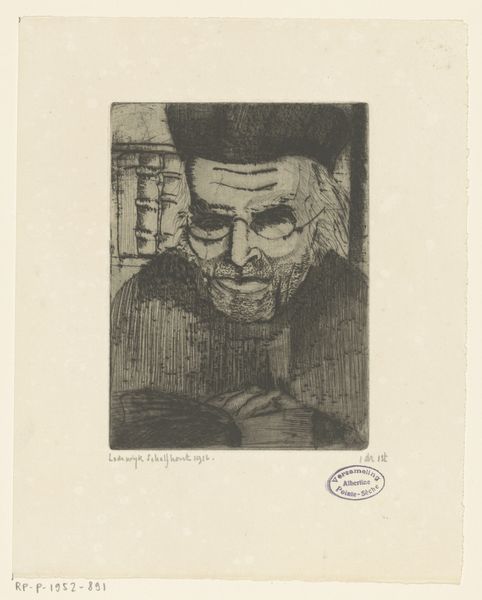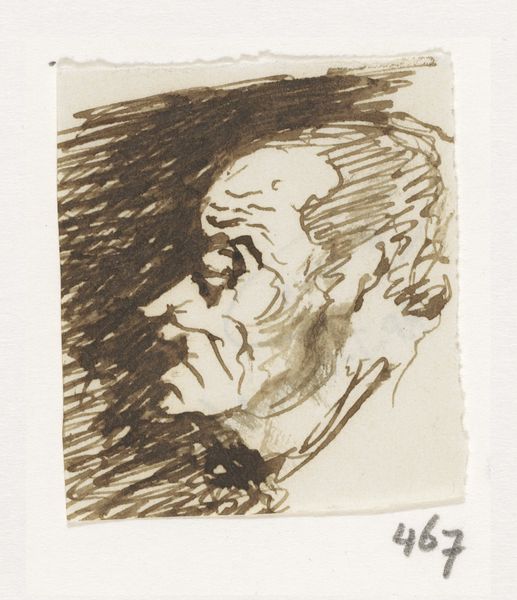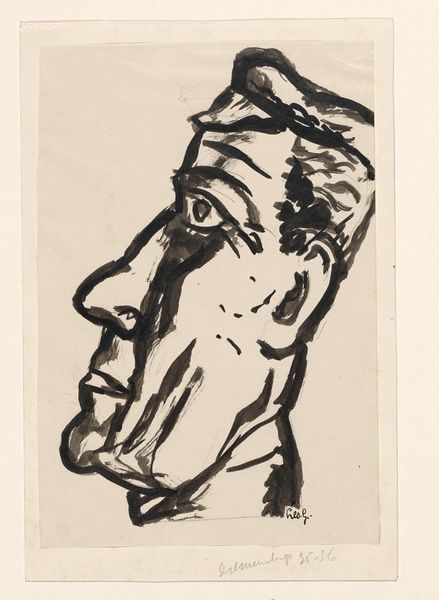
drawing, graphite
#
portrait
#
drawing
#
ink drawing
#
expressionism
#
graphite
Dimensions: height 412 mm, width 279 mm
Copyright: Rijks Museum: Open Domain
Curator: Look at the shadows in this 20th-century self-portrait by Reijer Stolk. There’s something very raw and confrontational in how the artist depicts himself, a cigarette jutting out from between his lips. The work, titled simply "Zelfportret," is rendered with graphite and ink. What are your first thoughts about the image, Editor? Editor: Brooding. It’s as though the artist is wrestling with himself. The use of stark lines around the eyes really emphasizes that internal tension, and the shadow across half his face makes me wonder what parts of himself he chooses to keep hidden, maybe even from himself. Curator: The cigarette functions almost as a contemporary stand-in for traditional symbols of introspection – a skull, or maybe a book. Smoking, in that context, is an action charged with both self-awareness and a kind of rebellious nonchalance. Stolk uses the visual symbol of smoke to express this sense of contemplation and turmoil. Editor: And rebellion for sure. The period this drawing was made in, 1906 to 1945, encompasses the rise of both World Wars. Looking at this, you can't help but think about what this image conveys of individual turmoil in the face of global chaos and social upheaval. Self-portraits became radical statements of autonomy and resistance during this time. Do you read that defiance too? Curator: Definitely. We need to keep in mind, of course, the cultural connotations surrounding the artist's choice to represent himself as a smoker during this time, in terms of identity. Stolk perhaps expresses how masculine stereotypes associated with rebellion in Expressionism allowed a kind of exploration of both a rebellious counter-culture, but also perhaps internalized notions about "proper" art and subject matter. Editor: It's a powerful example of how art becomes this sort of arena where identities are questioned, challenged, and renegotiated. In this piece, both self-deprecation and self-expression exist. I find the tension captivating. It is what allows us to engage across decades. Curator: Exactly. "Zelfportret," I think, offers a window into an era, a culture, and the ever-enduring search for individual meaning and autonomy during times of social volatility.
Comments
No comments
Be the first to comment and join the conversation on the ultimate creative platform.
